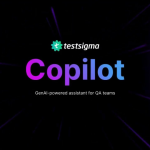In many ways, colleges, universities, and higher education institutions are supposed to bring people together to expose them to powerful new ideas and ways of communicating that they may not otherwise have had access to. Over the last decade, technology has profoundly changed the shape that it takes.
Not only has the tech-driven world we live in enhanced collaboration, but it has also done wonders for engagement and even efficiency across campuses everywhere.
Indeed, there are several core ways, in particular, that technology is revolutionizing communication in higher education that are absolutely worth examining.
1. Real-Time Video Conferencing
One of the most significant examples of how technology is revolutionizing communication in higher education has to do with real-time video conferencing. Opportunities to connect using tools like Zoom and Teams are available to everyone with an internet connection. They allow people to attend a class from anywhere, on any device, and at virtually any time. This has created a new era of hybrid classes that was largely impossible during a time when dial-up Internet connections still ruled the day.
This advancement alone has dramatically improved access to educational resources for many people.
2. Online Learning Experiences
Another example of these ideas in action is an interactive learning management system, otherwise known as an “LMS.” This digital tool offers higher education instructors a way to create and deliver content to students in a far more personalized way.
As everything passes through the LMS, the instructor gets access to a wealth of performance-based data that they may not otherwise have if they were still doing everything by hand. In addition, they have this insight to draw from far faster than ever as well.
What this means is that instructors can quickly see where performance gaps exist within their students and pivot to address them as quickly as possible. This helps to improve knowledge retention and engagement, making the class far more successful than it otherwise would have been.
3. Technology is Reducing Paper…and Headaches
Digital forms and other real-time data collection solutions have gone a long way towards streamlining administrative workflows, reducing the amount of manual paperwork that must be done, and improving responsiveness – all at the exact same time.
For example, say you’re a teacher who needs to give out self-assessments as a part of each student’s grade at the end of the year. Even 15 years ago, you’d probably still be doing so via a paper form. You have to hand it out, give people time to respond to it, turn it back in, make sure they don’t lose it, replace the ones they DO lose, etc. It’s not necessarily “difficult” in the strictest sense, but it is time-consuming and opens the door to a wide range of frustrations.
With a digital form, however, all that changes. Getting the form into the hands of the people who need to fill it out is as simple as sending them a link. They can fill it out on any device they’re comfortable with, and you can collect the data instantly. There’s nothing to “lose,” so there’s nothing to replace. You get all the information you need as quickly as possible, you can move on to the next task, and you don’t have to worry about how to properly dispose of dozens or even hundreds of paper forms when you’re done.
Or, say you’re a college administrator dealing with a student who wants to withdraw from a class after a deadline for automatic withdrawal has already happened. Naturally, the student would have to go through a formal process to do so, and in a world of paper-based forms, that would take a lot of time (while leaving a lot of opportunity for that seat in the class to remain occupied when it could really go to someone else).
With a digital form, the student can submit it online, and the administrator can process it just as quickly. Not only that but there would be a certain level of tracking and documentation that goes hand-in-hand with the digital form that wouldn’t be there in a paper-based world. This leads to not only a new level of transparency but also consistency.
A New Era of Learning
By design, universities have always lived on the cutting edge. They’ve embraced new ways of thinking and approaches to engagement to give people access to powerful opportunities to better themselves and their communities in the future. If anything, technology has only accelerated that which was already in motion. Tools like those outlined above have led to global collaboration, allowing students and faculty members to connect with peers across campus and worldwide.
In the end, higher education is all about sharing ideas in a powerful new way. It’s about making sure that the spread of information happens without restriction, no matter what. Technology has opened a new realm of possibilities when it comes to achieving that goal. Not only has it helped prepare institutions to meet the demands of an increasingly digital academic landscape, but it’s also changed what is possible for those students when they do finally leave their studies behind and enter the real world.
Lynn Martelli is an editor at Readability. She received her MFA in Creative Writing from Antioch University and has worked as an editor for over 10 years. Lynn has edited a wide variety of books, including fiction, non-fiction, memoirs, and more. In her free time, Lynn enjoys reading, writing, and spending time with her family and friends.















